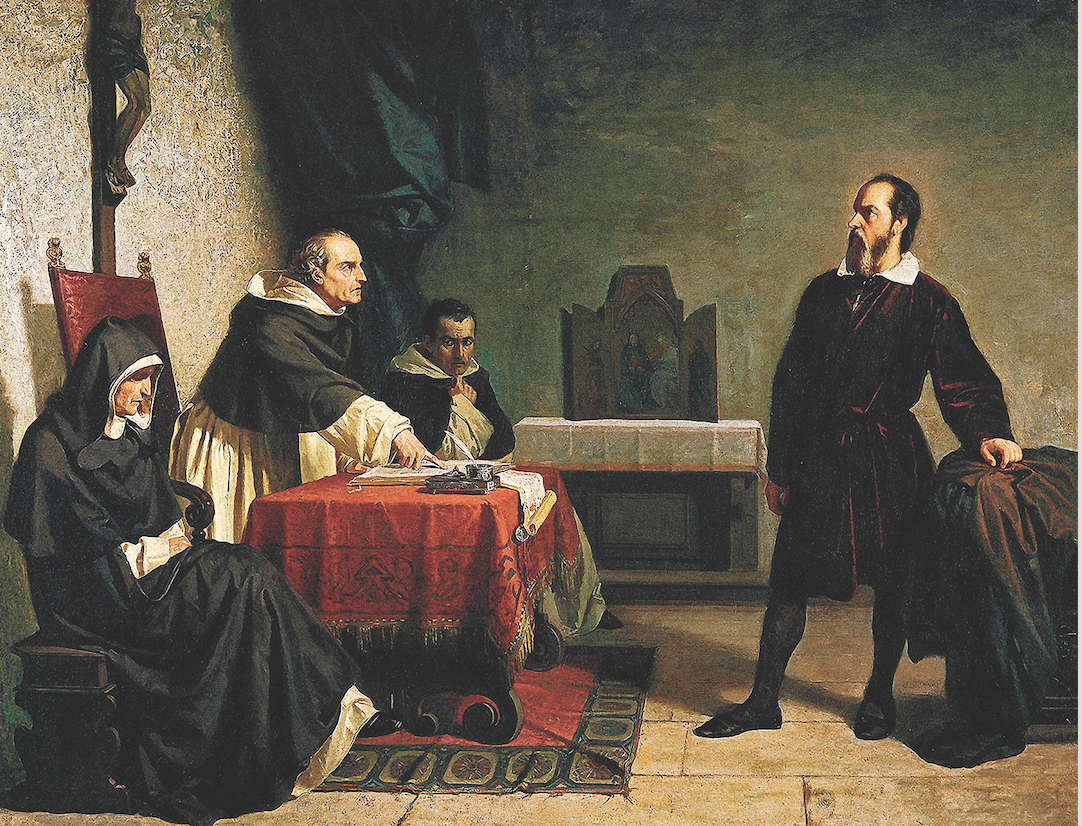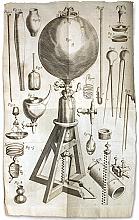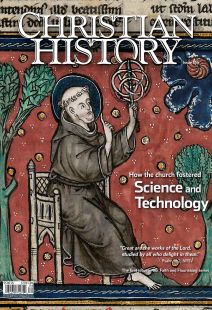The clergy behind science as we know it

[Galileo on Trial, 1857; Cristiano Banti / Public domain—Wikimedia]
The scientific revolution hit western Christendom hard. Right? When Nicolaus Copernicus (1473–1543) hypothesized that Earth was not at the center of the universe and published De Revolutionibus Orbium Coelestium (1543), a bitter struggle ensued between Christianity and science to shape the reigning worldview. Science came to dominate from the Enlightenment forward. Or so we’ve been told.
Pastors promoting science
But in fact a Lutheran minister and theologian named Andreas Osiander (1498–1552) was the one who published Copernicus’s seminal piece. That should be our first clue that the story of enmity between Christianity and science has often been distorted and overstated, leading us to forget some of history’s most influential science advocates and fueling a false dichotomy.
The prevailing narrative that Christianity is inherently antiscience gained acceptance in 1896 with Andrew Dickson White’s A History of the Warfare of Science with Theology and Christendom (see p. 33). White singled out prominent Protestant pastors such as John Wesley and Increase Mather for promoting an attack on the new science. “From the first to last,” White wrote, “a long line of eminent divines, Anglican and Calvinistic, strove to resist new thought.”
Wesley had already been singled out by other nineteenth-century writers for opposing scientific reasoning in support of the orthodox Christian faith. Yet Wesley’s own publications engaged the science of the times by advocating for the usefulness of electricity, exploring natural philosophy, and promoting natural solutions for curing diseases (rather than merely spiritual solutions). White conveniently ignored these writings in his hypothesis.
White is correct in at least one regard: if a war had been waged between theology and science, some prominent Enlightenment-era pastors would have led the charge. Yet when we delve into the history of eighteenth-century clergy, we discover a different story: pastors who engaged the latest scientific discoveries and experiments in a variety of ways and with a predominantly receptive attitude. The very idea that science and Christianity inherently conflicted would have defied their theological mindset.
Pastors after the Scientific Revolution viewed engagement with new science as an opportunity to understand God as Creator with greater depth to bring him greater glory. Clergy were frequent promoters rather than detractors, enthusiasts and participants rather than fear mongers. Their observations and contributions through publishing, preaching, and their own scientific pursuits helped enable the advancement of modern science in western communities.
New science and “hot” Protestants
If any group of clergy opposed the new science, surely it was Puritans? Nathaniel Hawthorn often stereotyped Puritans as cold, rigid, and judgmental. But the Puritans’ contemporaries did not consider them cold. Rather they maligned Puritans as “hot” for wanting to loosen what they considered the rigidity of the Church of England’s liturgy out of the desire to lead worship extemporaneously, determined to be sensitive to the free movement of the Holy Spirit.
Though not without their blind spots, Puritans defy common stereotypes and expectations when it comes to the new science. Historian George Marsden has shown in his biography of Jonathan Edwards (1703–1758) that New England clergy embraced the Newtonian worldview (that God can work through secondary causes) as well as many other important scientific advancements—and they frequently made their positions public. Marsden wrote, “New England clergy, being the best educated persons in their communities, were often the chief interpreters of the new science.”
Consider the story of Increase Mather (1639–1723), a contemporary of Isaac Newton (1642-1727), a minister, and the sixth president of Harvard. His name is often linked to the Salem witch trials, during which Mather made efforts (not without criticism) to curb the hysteria by discounting the use of spectral evidence in the courtroom. He promoted new science by helping to found the Boston Philosophical Society and stringently advocated for pioneering preventative approaches to disease along with his son, Cotton (1663–1678).
In 1721 for example, 60 percent of Boston’s residents contracted smallpox. The medical community did not support smallpox inoculation, or the variolation method. This practice involved inserting scabs or fluids of smallpox disease (or variola) underneath the skin through small cuts to immunize.
Although inoculation did reduce the risk of dying from smallpox, some would die from the vaccine, including Edwards himself in 1758. When public debate over the risks versus benefits of the procedure came to the forefront in the city’s newspapers, it was the clergy who advocated on its behalf. One historian has called this exchange “the most heated newspaper debate in colonial America.”
Mather published two pieces on the subject that year, including the elaborately titled Several Reasons Proving That Inoculation or Transplanting the Small Pox, Is a Lawful Practice, and That It Has Been Blessed by God for the Saving of Many a Life (1721). When his son wrote the first pro-inoculation piece for the Boston Gazette, Mather and four other Boston clergy signed it.
Expressing a pro-inoculation position in such a public manner was fairly courageous, especially given the unsuccessful attempt made on Increase’s life when a bomb was planted in his home. But in the end, many lives were saved and much suffering prevented because of this pastoral involvement.
The Mathers promoted the new science in the colonies in other ways too. As one of the leading Puritan clergymen of his generation, Cotton gained widespread acclaim for his observations in botany and writings on nature, and was elected Fellow of the Royal Society of London for his 1721 work, The Christian Philosopher: A Collection of the Best Discoveries in Nature, with Religious Improvements. There the function, use, beauty, and order of vegetables captured his attention. Even matters as seemingly monotonous as experiments with wheat led Cotton to enthusiastically declare God’s goodness and admirable design:
All this Curiosity many times lying in a Body much smaller than the smallest Grain of Sand. . . . Dr Harris affirms that not only in black Pepper-water but also in Water wherein Barley and Oats, but especially Wheat, hath been steeped for about four or five Days he hath seen prodigious Numbers of [insects]. Great GOD we are amazed!
Jonathan Edwards later modeled this passion for new science as the clerical leader of the Great Awakening and president of the College of New Jersey (now Princeton University). As a young man, Edwards spent considerable time studying arachnids. In his words “Of all insects, no one is more wonderful than the spider, especially with respect to their sagacity and admirable way of working.” As his personal notebooks attest, Edwards nurtured a lifelong interest in natural science, reflecting on Newton’s theories, including those regarding rainbows and motion.
City of Calvin
Meanwhile the new science was also making headway across the pond in the Calvinist city of Geneva. Imagine sitting in your pew Sunday morning and listening to your pastor expound on the intricacies of quantum mechanics while exegeting the biblical text. Hearing science in the pulpit was not an uncommon experience for the eighteenth-century Genevan congregant. In a city where roughly 3,000 worship services were held each year, the sermon was a pivotal means of public communication in shaping theological and biblical understanding, and it provides important insight into cultural mentality.
In his sermon on the importance of Christ’s Resurrection, pastor Pierre Mouchon (1733–1797) stressed the human inability to escape from sin by comparing sin to corrupted blood that circulates throughout the body. His explanation reflected the perspective of the time that diseases resulted from fluids like blood (hence the practice of “bloodletting”) rather than viruses. Granting this, Mouchon took the orthodox theological understanding of inherited sin and grounded it in physiological explanation.
Another Genevan pastor, Ezekiel Gallatin (1685–1733), also incorporated scientific examples into his preaching. Gallatin turned to the telescope, microscope, and gravity to illustrate 1 Corinthians 13:9–12 (“For now we see through a glass, darkly”). Without the telescope the naked eye would never have discovered the vast expansiveness of the universe. Similarly the microscope allowed the discovery of microorganisms 20,000 times smaller than could be seen by the human eye.
Yet even with this, he argued, human understanding grasps only a small part of what God has achieved. Even with the telescope and the microscope, we literally look through a glass darkly. For Gallatin this was not an opportunity to wallow but to revel in God’s revelation through his Son and the promise that our human curiosity and knowledge will be fully satisfied at the end of the age.
Finding Frankenstein
Just as science was welcome in the sermons of Geneva, so clergy were welcome in the academy’s scientific posts. The vast majority of professors holding posts in the new sciences at Geneva’s Academy (today the University of Geneva) were ordained pastors. Pastor François-Etienne Jallabert (1658–1724) held Geneva’s first chair of mathematics, established in 1704; his son, Jean Jallabert (1712–1768), also an ordained Genevan pastor until 1744, served as professor of experimental physics, mathematics, and philosophy.
Founded by John Calvin as a seminary and law school, Geneva’s Academy grew in prestige over the century as it embraced experimental philosophy and mechanistic physics. Supported by Geneva’s Company of Pastors, Jean Jallabert worked at the forefront of experimenting with electricity to treat illness. In fact his electrotherapy is the reason that Mary Shelley set Frankenstein in eighteenth-century Geneva.
The clergy also supported the study of astronomy in the city by raising funds for an observatory and a professor of astronomy. Their support opened the door for the construction of a meteorological building followed by the establishment of a chemistry laboratory. Finally, although White made a blanket claim about clerical resistance to the addition of lightning conductors within eighteenth-century cities, Geneva’s clergy caused no such opposition when professor Horace-Bénédict de Saussure planted a lightning rod in their city.
The clergy of Geneva did not regard the emergence of the new science as revolutionary, and by 1791 Thomas Jefferson had declared, “On the continent of Europe, no place is comparable to Geneva. The sciences are there more modernized than anywhere else.” Without a doubt the advancement of new science owed much to Geneva’s clergy.
“All truth is God’s truth”
The notion that Christianity worked tirelessly to block the progress of science from its inception is a difficult perception to dispel, but time and again it runs counter to the historical record. Eighteenth-century clergy consistently helped their communities understand and interpret the new science transforming their world. They modeled and advocated engagement with science as they integrated it into their ministries.
Even in the post-Darwinian era, theologian-pastors Charles Hodge (1797–1878) and B. B. Warfield (1851–1921) embraced some scientific evidence in favor of evolutionary theory, though they also reframed those results theologically. Hodge rejected a process that functioned blindly according to natural laws. Instead he defended the agency of God as Creator of the world and as the governor of all physical causation without denying the efficiency of secondary causes in cooperation with God’s will.
The twenty-first century is a rapidly changing scientific age when boundaries are being crossed that were once never imagined: from genetically engineering pigs to growing organs for human transplant to permanently changing the DNA germline of human embryos. The seventeenth and eighteenth centuries show us Christians in the field of science who were able to engage actively and effectively in scientific advancement. These pro-science thinkers provided theological and ethical perspectives that reframed, redirected, and advanced discoveries and understandings adeptly in light of Scripture and the claims of the Christian faith.
Acknowledging that “all truth is God’s truth” encouraged a needed posture and practice of listening, embracing, cautioning, and contributing to the new science. It could do so for our own century as well. CH
By Jennifer Powell McNutt
[Christian History originally published this article in Christian History Issue #134 in 2020]
Jennifer Powell McNutt is Franklin S. Dyrness Associate Professor in Biblical and Theological Studies at Wheaton College, a fellow of the Royal Historical Society, and a parish associate at First Presbyterian Church of Glen Ellyn. She is the author of Calvin Meets Voltaire: The Clergy of Geneva in the Age of Enlightenment, 1685–1798. This article is adapted, by permission, from one that appeared in the December 2017 issue of Christianity Today and won first place in the 2017 CT Science Writing Contest.Next articles
A world of love and light
Christian theology shaped modern science through the work of Johannes Kepler and Robert Boyle
Edward B. DavisDrinking from a fount on Sunday
Michael Faraday’s experiments advanced the study of electricity
Geoffrey CantorSupport us
Christian History Institute (CHI) is a non-profit Pennsylvania corporation founded in 1982. Your donations support the continuation of this ministry
Donate




